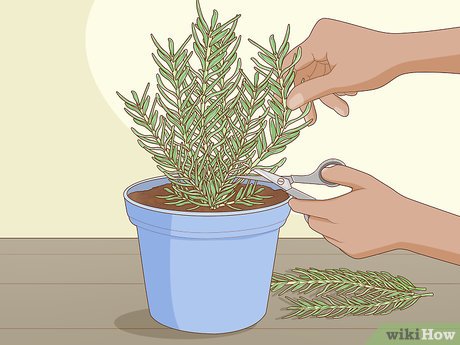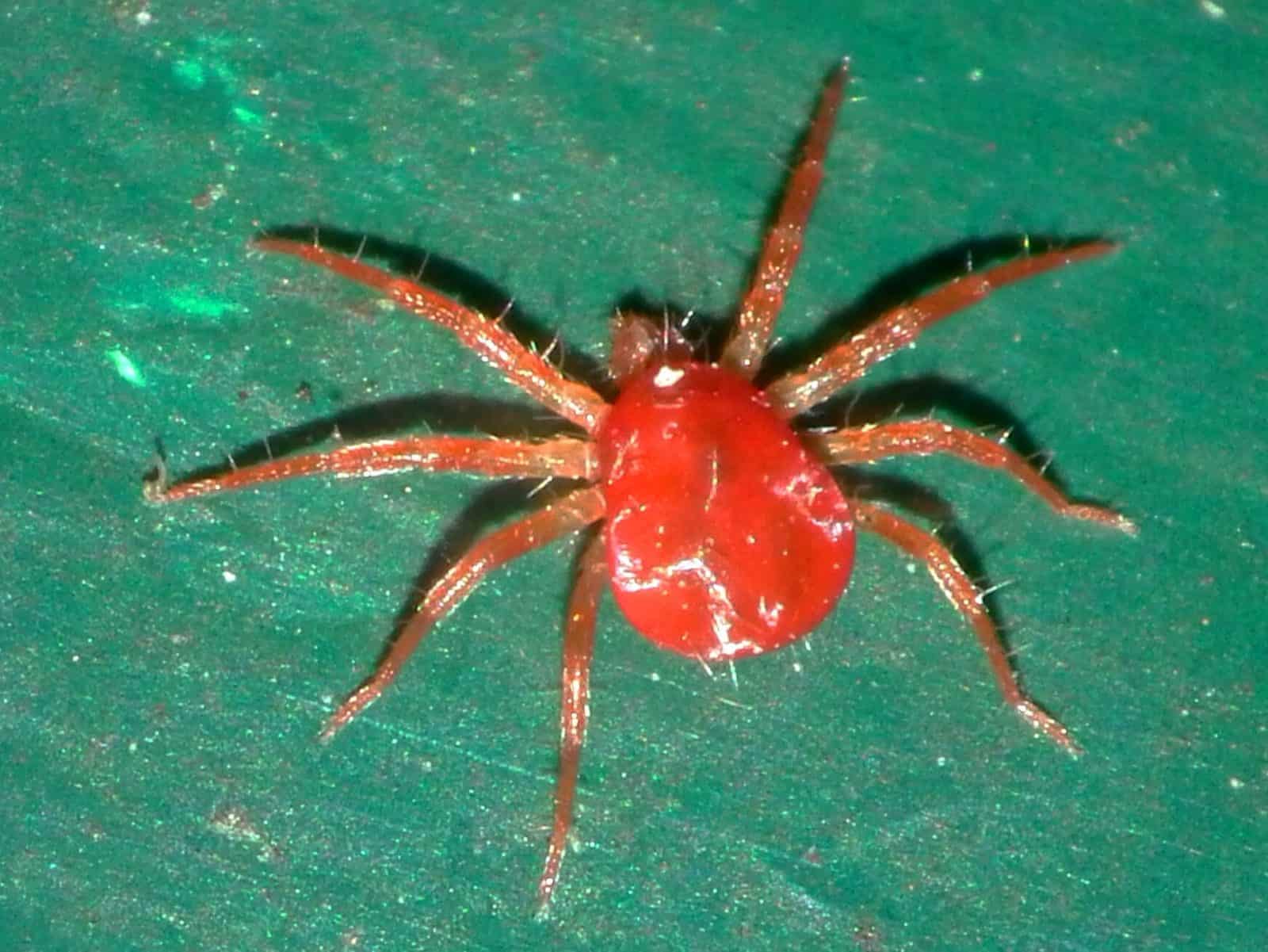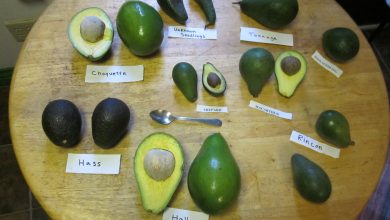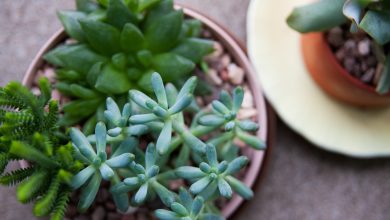How to Plant Rosemary in [12 Steps and with Photos]

The famous water known as «Queen Hungary Water» has rosemary as its main ingredient, and was used to soothe rheumatic pain and paralysis of Queen Elizabeth of Hungary.
And in ancient Egypt it was one of the ingredients used to embalm the bodies of the dead.
Amazing, right?
Rosemary is a shrub that can be grown in temperate climates, on the hot side.
In addition, it is considered a medicinal herb (such as aloe vera, thyme or chamomile) and an aromatic plant, as well as being used as a houseplant.
If you want to plant rosemary in your urban or home garden, I think you’ve come to the right article
Important points for Planting Rosemary:
- When? In Autumn and transplant in Spring.
- Where? Place that receives about 6-8 hours of sunlight, although it also tolerates shade.
- Harvest time? From about 40 days after the transplant.

- How do we prepare the land? It is not picky about nutrients. Eliminate weeds and add some compost.
- How do we water? It is also not picky about water. Ideal to keep the soil moist with drip irrigation.
- How do we sow? We can sow directly in the ground, through a seedbed or by cutting.
- How do we harvest? We must regularly prune its fresh leaves.
- Favorable associations? Broad beans, carrots, tomatoes and cabbages.
- Unfavorable associations? None in general.
- Plagues and diseases? Red spider, rosemary beetle, downy mildew, phytophthora and alternaria.
Rosemary is one of the most widely used aromatic herbs in the world.
Whether for its medicinal properties or for its excellent aroma, rosemary is an indisputable ingredient for the preparation of ointments, dishes, cosmetics and many more.
It is a very complete crop, it is a plant that grows fast andvery easy to sowSince it barely takes root, it can be kept for several years.
Learn what is the easiest way to plant rosemary and harvest it.
Did you know…Did you know that Romero is an excellent anti-mosquito plant?
What do we need to plant rosemary?
When? The dates
If we want to sow rosemary with seeds, it is recommended to do it in autumn and transplant in spring.
To learn more about transplanting rosemary, check out this article.
Where? Temperature and Light
In its natural habitat, rosemary grows in environmentsdry and very bright.
It is recommended that it spend between 6 to 8 hours of intense sun, although it can tolerate periods of shade.
The ideal temperature for its germination is 20 ºC.
It adapts very well to high temperatures, although above 35 ºC its growth stops.
Similarly, it is very resistant to cold and can even be maintained during snowfall.
However, it is advisable to protect the first shoots from frost, as they are more sensitive to low temperatures.
How do we water it? Humidity
It presents a great tolerance to drought, but it develops better with a good irrigation scheme.
 Irrigation should be light, allowing periods of dry soil between irrigations.
Irrigation should be light, allowing periods of dry soil between irrigations.
Before the first shoots, it requires regular watering for the seed to germinate. It will suffice to keep the soil moist, without flooding.
Later it will be enough to water the plant when the garden or orchard is watered, even allowing the rain to be responsible for providing the amount of water it requires.
As it is not very demanding to water, the excess can end up rotting the roots. By itself, you should try to have a soil with good drainage.
How do we prepare the land? Substrate and nutrients
prefers soilpoor calcareous, sandy, light or arid nature.
Dry soils help you strengthen your root system.
It is not very demanding in terms of nutrients, so it does not require excessive fertilization.
A contribution of homemade organic matter such as the occasional compost will improve its growth remarkably.
Optimum pH is between 6.0 and 7.5.
Agricultural lime in the substrate in moderate amounts can help its development.
How to plant rosemary step by step
- Preparing the ground. Extract weeds and remains of previous crops and all kinds of residues to ensure that your rosemary plants can develop properly.
- Moisten the soil a week before planting rosemary.This reduces the risk of expelling the seeds by the force of the water.
- Fertilize the soil.Spread some organic matter on the soil to improve the overall quality before you start sowing the seeds.
- Depending on the way you choose to plant rosemary, follow the steps below.
Now you must determine if you want to do it directly in the garden, through seeds in a seedbed or through cuttings.

By seeds directly in the garden
- Soak the seeds in water 24 hours before sowing, to promote germination.You should introduce them to a maximum depth of 2.5 cm, trying to cover them with a little mulch.
- You can put two to three seeds in each hole. Keep a separation of between 10 and 20 centimeters between one plant and another.
- Water the soil regularly until the seeds germinate, which will take about 20 days.
Through seeds in nursery
- Place them at a maximum depth of 2 cm, in a container at least 15 centimeters in diameter and a minimum depth of 15 cm.
- Fill the container with two-thirds coarse sand and one-third peat moss (sphagnum).
- Later, place the pot in a sunny place, but without direct sunlight.
- Water the soil regularly until the seeds germinate, which will take about 20 days.

By cuttings
- Following the same instructions for the container, place the 10 cm cuttings, at an approximate depth of 3 cm.Make sure that the end you bury does not contain leaves to prevent the stem from rotting.
- Later, place the pot in a sunny place, but without direct sunlight.
- Water the cutting regularly and keep it in a warm place until roots form, which will take about 3 weeks.
- Select the healthiest and strongest seedlings. If more than one seed has germinated in each hole, keep the strongest one. To do this, do not pull the weak one, as you can damage the leaves. A simple pruning at ground level is sufficient.
- Transplant your shoots.If you have planted in a pot or seedbed, you must perform the transplant a month after planting. Choose a sunny and well-ventilated area in the garden. Leave between 10 and 20 centimeters between each of your plants.
- If you live in a region with cooler climates [/su_highlight], it’s best to keep rosemary in pots so you can move it around at will.
- Protect your plants.Use mesh to protect your plants from pests and possible predators. Protection is important mainly during the early stages.
- Check your plants regularly to avoid pests and diseases.

To know more, you can see: Rosemary cuttings.
harvest and gathering
You must regularly prune the plant or it will develop very tall stems, but with few leaves.
The harvest takes place 40 days after the transplant.
 Being a perennial plant, its fresh leaves can be harvested throughout the year.
Being a perennial plant, its fresh leaves can be harvested throughout the year.
Cut as many rosemary leaves as you need. Its branches will continue to grow normally.
A common mistake is to cut the leaves closer to the base, as they are the most mature.
On the contrary, it is best to cut the new leaves that come out, as they are fresher and have better flavor. In this way, you will ensure that the nutrients are used in the production of new leaves and do not promote the vertical growth of the plant.
If you want to dry it, it is better to do it in summer, hanging the corsages in a cool and dry dark place without exceeding temperatures of 35ºC.
When they are completely dry, the leaves are detached from the stems and stored in airtight jars.
Wash the leaves once cut.
rosemary care
Rosemary is a plant that does not need too much care.
However, pruning is necessary from time to time. As well as keeping the soil fertilized, with enough organic matter or earthworm humus.
It is also important that the land where we want to plant rosemary is well drained and the water filters correctly, in this way it is much easier to keep the roots moist.
Favorable associations of rosemary
It pairs well with beans, carrots, tomatoes, and cabbage.
Its proximity to other plants will help keep insects and pests away.
Above all, it favors tomatoes, since it protects them from attacks by parasites and increases their flavor.
Common pests and diseases
Red spider
It can be wetted at night by sprinkling to maintain humidity.
To combat an infestation, an extract of garlic and chili can be applied, although if the plant is severely affected, it is best to remove it to prevent it from spreading to other plants.
rosemary beetle
To combat it, the use of Neem oil and potassium soap is recommended.
Mildew
To combat it, it is recommended to eliminate weeds and crop residues, as well as to avoid excess humidity by promoting adequate ventilation of the plant.
Affected leaves should be removed.
Horsetail extract can also be applied.
alternate
The Alternaria fungus requires high relative humidity, so good ventilation can prevent its attack.
It is also very important to remove plant debris after harvesting the crop.
Among the active ingredients of possible use we have horsetail and potassium soap.
Phytophthora
Avoid excess moisture in the soil and sow in well-drained substrates.
At planting time, add a good amount of mulch, compost, peat or manure to fluff up the soil and aerate it.
If you also add river sand and mix it well with the soil, the result will be favorable.
Another form of prevention is crop rotation.
Once it has appeared, the use of fungicides is recommended for its control.
verticillium wilt
 Verticillium or Verticillium wilt is a common soil fungus that thrives in temperate climates around the world and can be present in the soil for decades.
Verticillium or Verticillium wilt is a common soil fungus that thrives in temperate climates around the world and can be present in the soil for decades.
Verticillium wilt overwinters in the soil as dormant mycelium or tiny dormant black structures called microsclerotia, waiting for favorable conditions to return.
They enter damaged plant tissue through the roots and multiply. Many common weeds, such as dandelions and weeds, can be Verticillium host species.
Verticillium wilt is a disease that affects more than 350 species of eudicolous plants. It is caused by six species of Verticillium fungi: Verticillium dahliae, Verticillium albo-atrum, Verticillium longisporum, Verticillium nubilum, Verticillium theobromae, and Verticillium tricorpus.
Many plants with significant economic weight are susceptible, such as cotton, tomatoes, potatoes, oilseed rape, aubergines, peppers, and ornamental plants, as well as others in natural vegetation communities.
Many species and cultivars of eudicots are resistant to the disease, and all monocots, gymnosperms, and ferns are immune. To know more: Verticillium wilt in the Orchard: What is it? How do we identify it?




